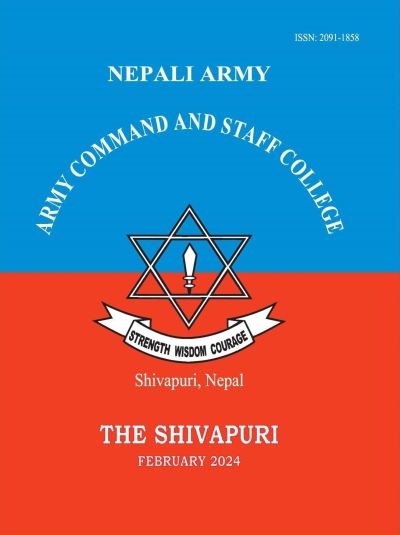Critical Analysis of the Nepali Army’s Counter Insurgency Campaign Against Maoist Insurgency in Nepal
DOI:
https://doi.org/10.3126/shivapuri.v25i1.63431Keywords:
Maoist insurgency, Government of Nepal (GoN), Nepali Army (NA), Counter insurgency (COIN), campaign plan, Operational Environment, Lines of Effort, Intelligence, operations, unity of effort, royal massacre, communist party, Nepal Policy (NP), Armed Policy Force (APF), Unified command, Rangers, Jungle WarfareAbstract
Nepal witnessed an insurgency within its territory for a decade from 1996 to 2006. Nepali army, the national armed force, along with other security forces, conducted the counter-insurgency campaign within the broader campaign of the Nepalese government. This paper examines the growth of Maoist insurgency in Nepal, the government's initial response, and finally the army's campaign against the insurgents. Using the information presented in academic and government literature as well as the experience gained by the researcher himself, it concludes that the army was successful in tactical battles against the Maoists but could not gain complete victory at the strategic level. The paper also examines the challenges faced by the army during the campaign, and the wider concepts coming out from the overall critical analysis of the campaign.




